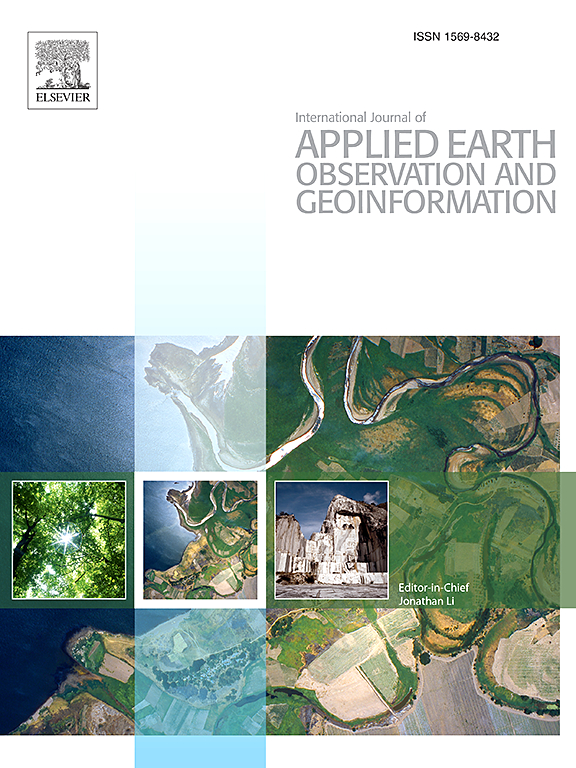A difference enhancement and class-aware rebalancing semi-supervised network for cropland semantic change detection
IF 7.6
Q1 REMOTE SENSING
International journal of applied earth observation and geoinformation : ITC journal
Pub Date : 2025-02-15
DOI:10.1016/j.jag.2025.104415
引用次数: 0
Abstract
Changes in cropland are among the most widespread transitions on the Earth surface, significantly impacting food security, ecological conservation, and social stability. Compared to conventional change events, cropland changes involve complex dynamic transformations of semantic representations within the land system, requiring the identification of both the locations and categories of changes. Despite numerous remote sensing change detection methods have been proposed in previous studies, two challenges in cropland semantic change detection (SCD) still deserve further discussion: 1) transition confusions between similar categories and 2) under-labeling and class imbalance related to semantic labels. To address these challenges, we propose a difference enhancement and class-aware rebalancing semi-supervised network (Semi-DECRNet) for cropland SCD. The proposed Semi-DECRNet is implemented in a multi-task three-branch architecture, incorporating a multi-scale semantic aggregation difference enhancement module to couple the semantic and initial differential features at both global and local levels to model the temporal and causal relationships among the binary change detection and semantic segmentation branches. Additionally, a class-aware rebalancing self-training strategy is developed to adaptively calibrate the pseudo-label thresholds and further mine the semantic knowledge in unchanged areas. Experiments and analysis on three benchmark datasets demonstrate the effectiveness and superiority of the proposed Semi-DECRNet method for the cropland SCD task. Code is available at https://github.com/DaiAnjin/Semi-DECRNet.
求助全文
约1分钟内获得全文
求助全文
来源期刊

International journal of applied earth observation and geoinformation : ITC journal
Global and Planetary Change, Management, Monitoring, Policy and Law, Earth-Surface Processes, Computers in Earth Sciences
CiteScore
12.00
自引率
0.00%
发文量
0
审稿时长
77 days
期刊介绍:
The International Journal of Applied Earth Observation and Geoinformation publishes original papers that utilize earth observation data for natural resource and environmental inventory and management. These data primarily originate from remote sensing platforms, including satellites and aircraft, supplemented by surface and subsurface measurements. Addressing natural resources such as forests, agricultural land, soils, and water, as well as environmental concerns like biodiversity, land degradation, and hazards, the journal explores conceptual and data-driven approaches. It covers geoinformation themes like capturing, databasing, visualization, interpretation, data quality, and spatial uncertainty.
 求助内容:
求助内容: 应助结果提醒方式:
应助结果提醒方式:


